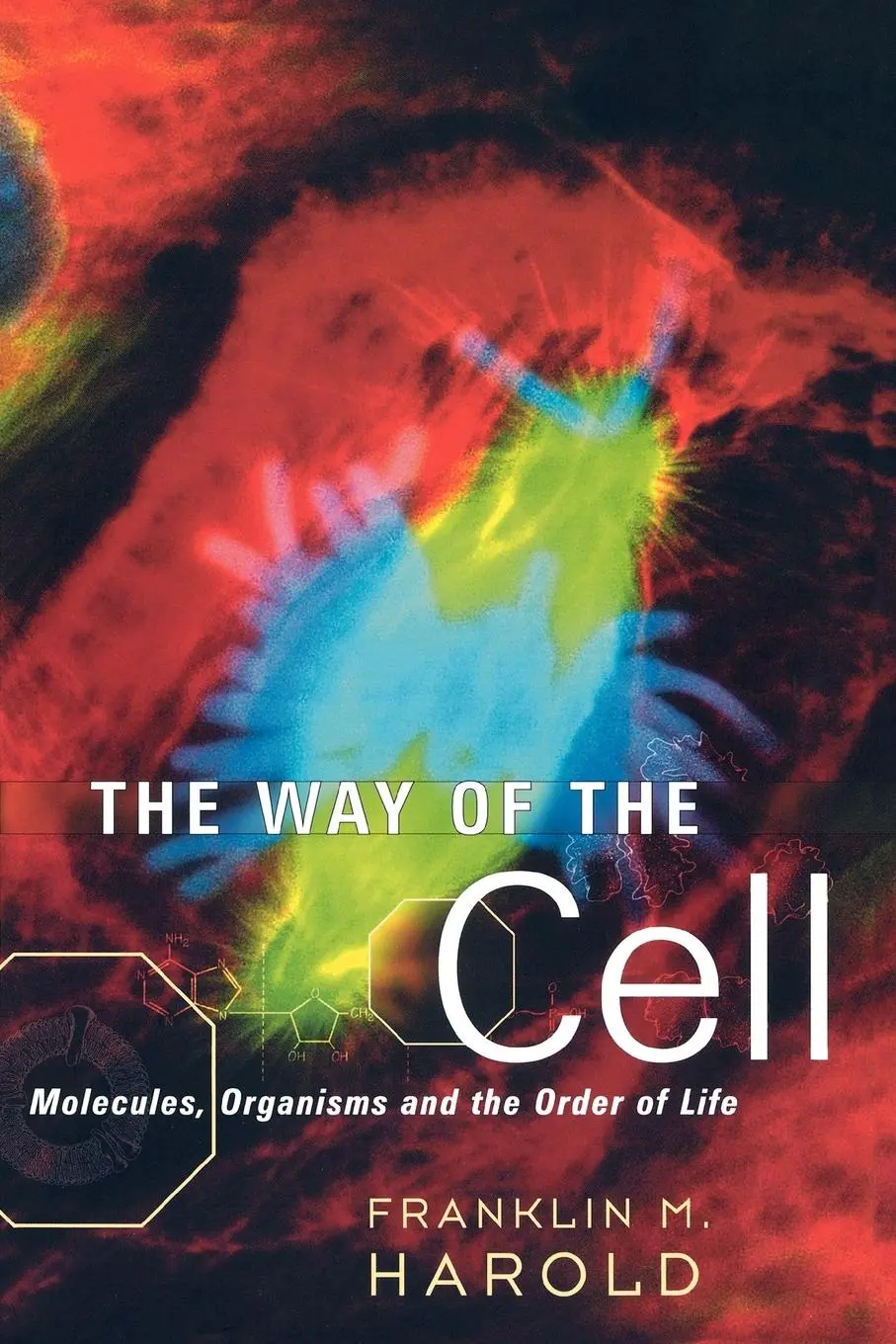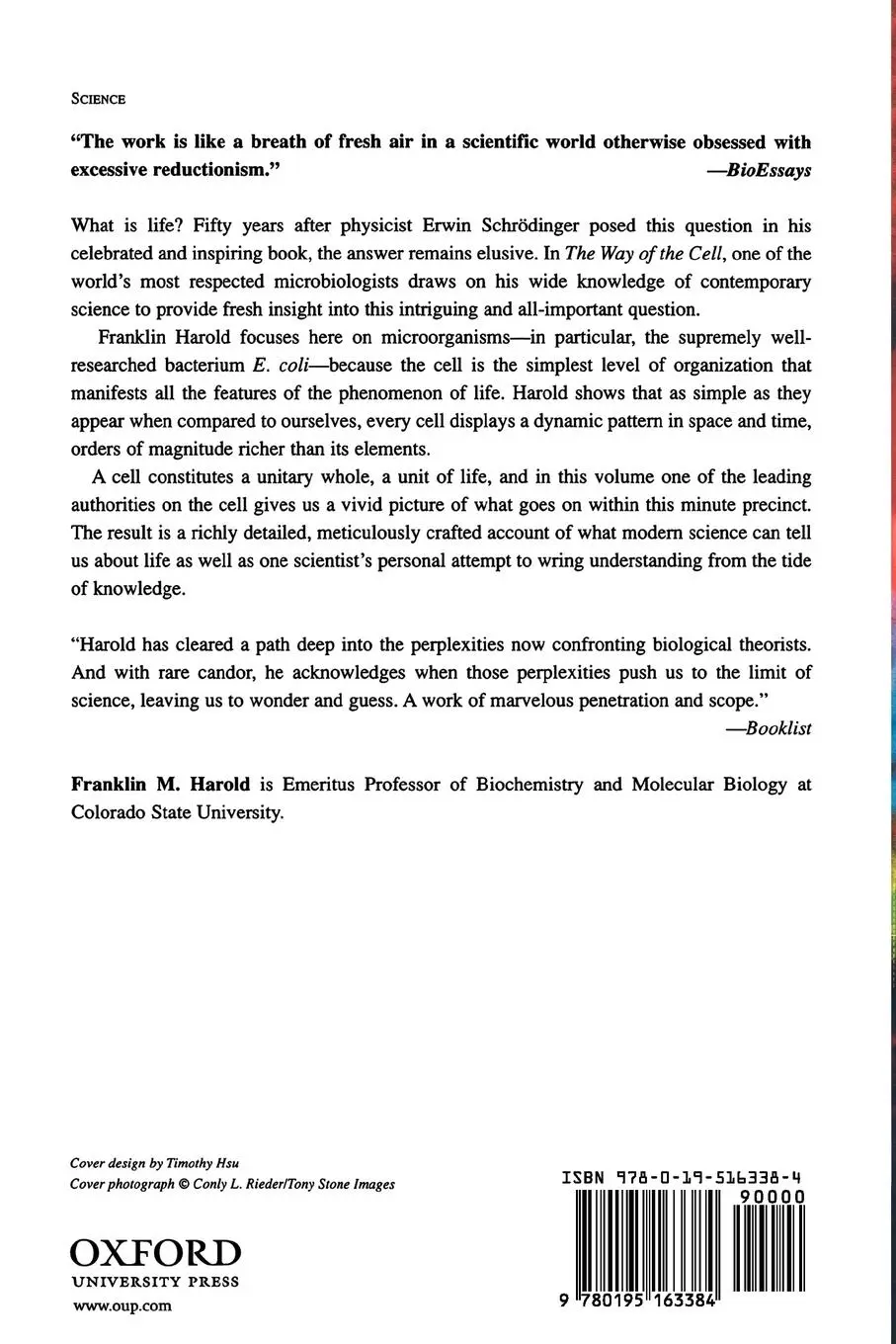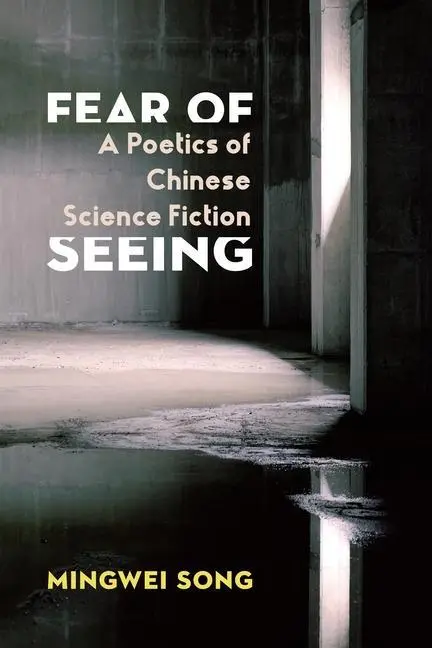Description
What is life? Fifty years after physicist Erwin Schrodinger posed this question in his celebrated and inspiring book, the answer remains elusive. In The Way of the Cell, one of the world’s most respected microbiologists draws on his wide knowledge of contemporary science to provide fresh
insight into this intriguing and all-important question.
What is the relationship of living things to the inanimate realm of chemistry and physics? How do lifeless but special chemicals come together to form those intricate dynamic ensembles that we recognize as life? To shed light on these questions, Franklin Harold focuses here on microorganisms–in
particular, the supremely well-researched bacterium E. coli–because the cell is the simplest level of organization that manifests all the features of the phenomenon of life. Harold shows that as simple as they appear when compared to ourselves, every cell displays a dynamic pattern in space and
time, orders of magnitude richer than its elements. It integrates the writhings and couplings of billions of molecules into a coherent whole, draws matter and energy into itself, constructs and reproduces its own order, and persists in this manner for numberless generations while continuously
adapting to a changing world.
A cell constitutes a unitary whole, a unit of life, and in this volume one of the leading authorities on the cell gives us a vivid picture of what goes on within this minute precinct. The result is a richly detailed, meticulously crafted account of what modern science can tell us about life as
well as one scientist’s personal attempt to wring understanding from the tide of knowledge. Über den Autor Franklin M. Harold is Emeritus Professor of Biochemistry and Molecular Biology at Colorado State University. He lives in Edmonds, Washington.
insight into this intriguing and all-important question.
What is the relationship of living things to the inanimate realm of chemistry and physics? How do lifeless but special chemicals come together to form those intricate dynamic ensembles that we recognize as life? To shed light on these questions, Franklin Harold focuses here on microorganisms–in
particular, the supremely well-researched bacterium E. coli–because the cell is the simplest level of organization that manifests all the features of the phenomenon of life. Harold shows that as simple as they appear when compared to ourselves, every cell displays a dynamic pattern in space and
time, orders of magnitude richer than its elements. It integrates the writhings and couplings of billions of molecules into a coherent whole, draws matter and energy into itself, constructs and reproduces its own order, and persists in this manner for numberless generations while continuously
adapting to a changing world.
A cell constitutes a unitary whole, a unit of life, and in this volume one of the leading authorities on the cell gives us a vivid picture of what goes on within this minute precinct. The result is a richly detailed, meticulously crafted account of what modern science can tell us about life as
well as one scientist’s personal attempt to wring understanding from the tide of knowledge. Über den Autor Franklin M. Harold is Emeritus Professor of Biochemistry and Molecular Biology at Colorado State University. He lives in Edmonds, Washington.
| Erscheinungsjahr: | 2003 |
|---|---|
| Fachbereich: | Allgemeines |
| Genre: | Biologie, Importe |
| Rubrik: | Naturwissenschaften & Technik |
| Thema: | Lexika |
| Medium: | Taschenbuch |
| ISBN-13: | 9780195163384 |
| ISBN-10: | 0195163389 |
| Sprache: | Englisch |
| Einband: | Kartoniert / Broschiert |
| Autor: | Harold, Franklin M. |
| Hersteller: | Oxford University Press |
| Verantwortliche Person für die EU: | Libri GmbH, Europaallee 1, D-36244 Bad Hersfeld, [email protected] |
| Maße: | 234 x 156 x 18 mm |
| Von/Mit: | Franklin M. Harold |
| Erscheinungsdatum: | 01.03.2003 |
| Gewicht: | 0,488 kg |







Reviews
There are no reviews yet.